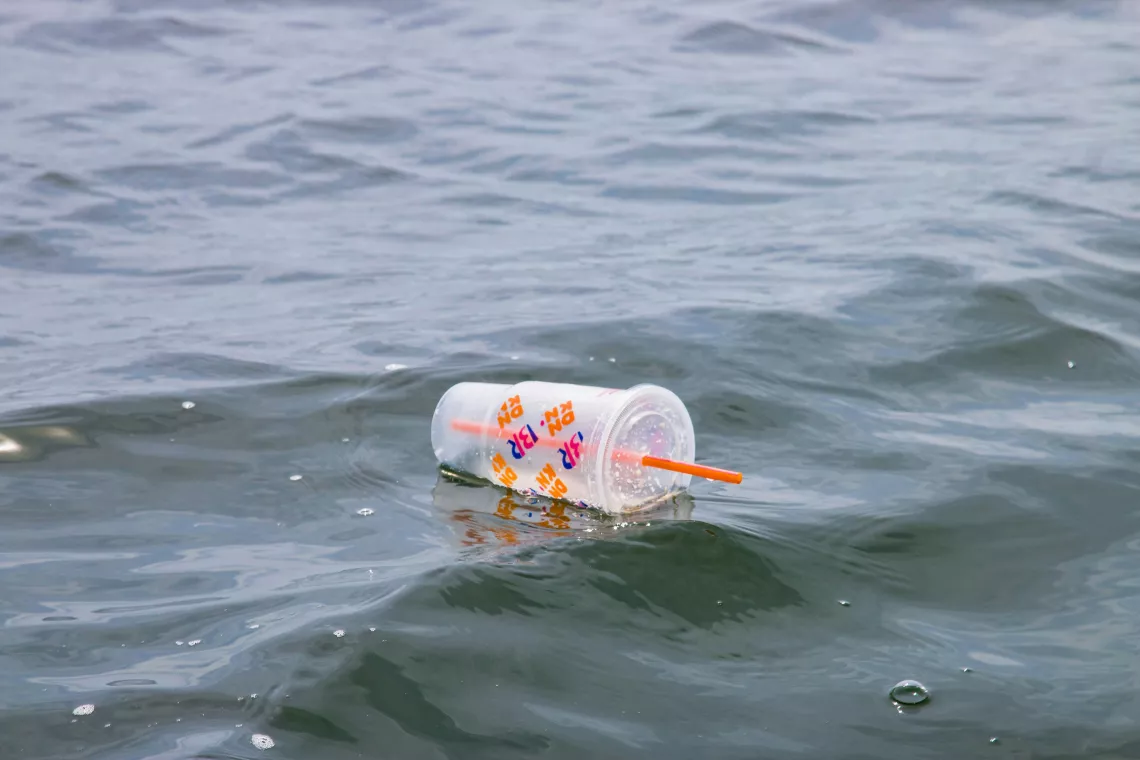By Deborah Williams
Editor’s note: Another practical action story that you can take to help tone down Climate Change. Williams is a UCSB lecturer in Environmental Studies.

When you are at a party, a coffee shop, a gym or a store, are you dismayed by how many single-use bottles or cups you see?
This month’s column focuses on ditching single use beverage bottles and cups – and offers great, win/win alternatives.
Americans buy approximately 50 billion disposable water bottles annually, which averages out to 156 plastic bottles a year for every person in our nation. These single use containers demand more than 17 million barrels of oil to produce, not including transportation. In addition to water bottles, there are also far too many single use plastic soda and energy drink bottles. Last year, Gatorade alone had about 7 billion dollars worth of sales in the US.
While a plastic water bottle may take only a few minutes to use, it requires up to 450 years to degrade completely -- polluting our waterways, our oceans, our lands, our landfills and our wildlife. Consuming water from the tap, as opposed to a plastic bottle, reduces energy consumption by 85% and greenhouse gas emissions by 79%.
Not only are plastic water bottles bad for the environment, but they are also bad for our health. Scientists have found microplastics in 93% of tested bottled water. Another study discovered that a liter of 3 tested brands of popular bottled water contained between 110,000 and 370,000 plastic bits.
In addition to bottles, plastic and Styrofoam cups also pose significant environmental and other issues. Producing one Styrofoam cup results in approximate 33 grams of CO2, and takes about 500 years to decompose. Both the carcinogens benzene and styrene are used to manufacture polystyrene. Similarly, emissions from a single-use plastic cup range between 10 grams to 30 grams of CO2, and break down into environmentally harmful microplastics.
What about single use “paper” cups? Almost all single use hot beverage cups for coffee and tea contain both paper and a thin plastic (polyethylene) waterproof lining. Because the lining of the cup starts degrading when the hot beverage is in it, the cup releases, on average, 25,000 micron-sized plastic particles into the coffee or tea that is being consumed. The plastic lining also makes the cups almost always not recyclable Then there is the plastic lid, which adds to pollution and human health problems. Even 100% paper cups have a significant impact, producing both CO2 (up to 110grams per cup with a paper sleeve), and resulting in about 6.5 million trees being cut down annually.
Fortunately, there are terrific alternatives.
Where ever we go, we can carry and drink from a reusable cold beverage bottle. Aluminum, stainless steel, ceramic and glass water bottles are a great choice, as well as bottles made from BPA-free plastic. There are many terrific options. Some very helpful “best of” lists include: “30 Best Water Bottles to Keep You Refreshed” from Men’s Health; “The Best Water Bottles” by the New York Time’s Wirecutter; “15 of the Very Best Water Bottles” by New York Magazine; and bon appetit’s Best Water bottles list.
There are also a multitude of wonderful options for using reusable hot beverage cups/mugs. Some “best of” lists can be found on Wired’s choices; epicurious’s picks; and Forbes’ vetted list. Fortunately, most coffee shops will use the reuseable cup/mug you bring in, and some, like Starbucks, will accept reusable cups and mugs for Drive-thru orders.
If you want flavor, vitamins and or electrolytes in your water, just add powder or tablets to the water in your reusable water bottle. There are many highly rated options, including lists from: New York Magazine (“The very Best Electrolyte Powders and Mixes”); 99Boulders; Rolling Stone; and verywellfit.
Here are two final thoughts. Drinking bottled water is expensive. Depending on the water purchased, bottled water can be from 240 to 10,000 times more expensive than tap water. You’re paying for all that harmful plastic.
Finally, when you use a reusable cold beverage bottle and/or hot beverage cup or mug, you’re not only decreasing your carbon footprint, you’re also helping to influence others to do so. Speaking from my own personal experience, when one of my students brought a personal mug to a Coffee Chat, that was when I decided I must do this in the future -- and I have.